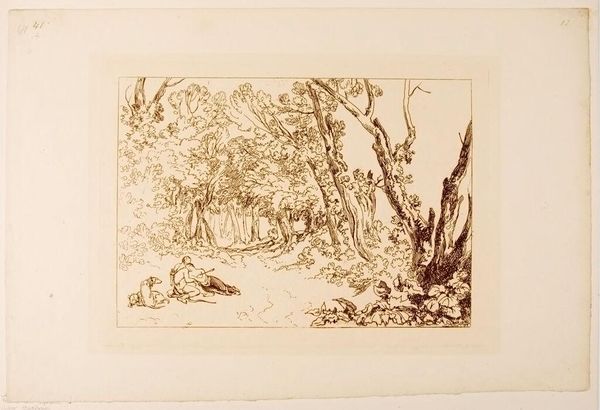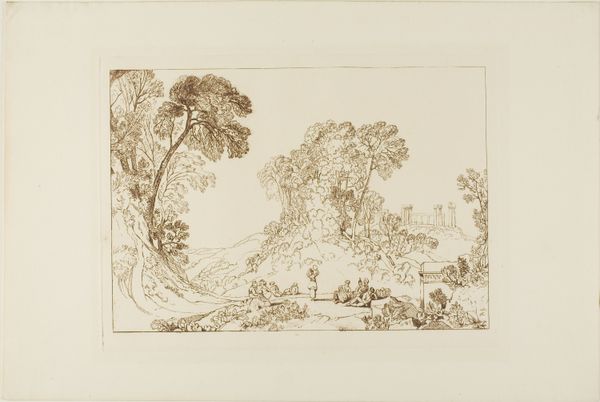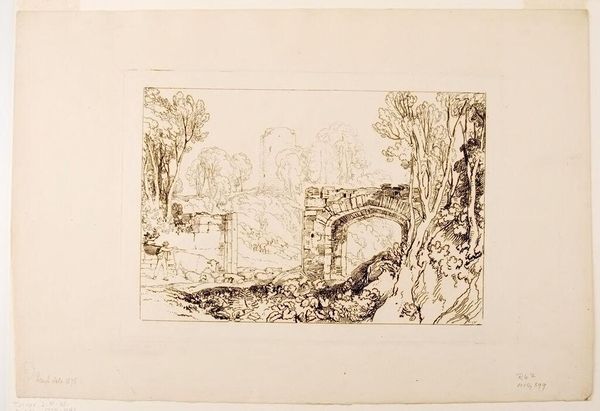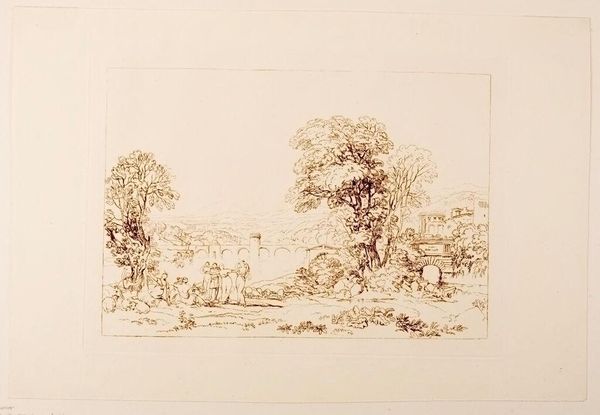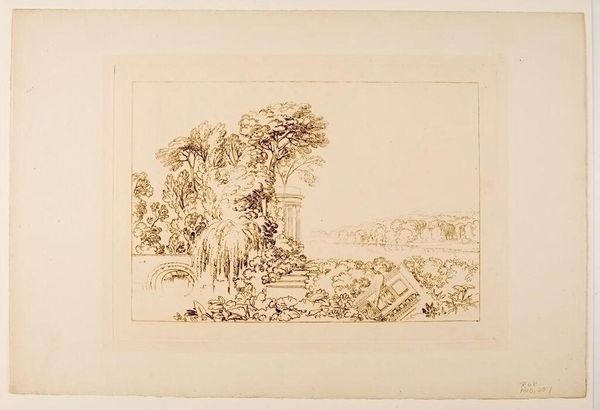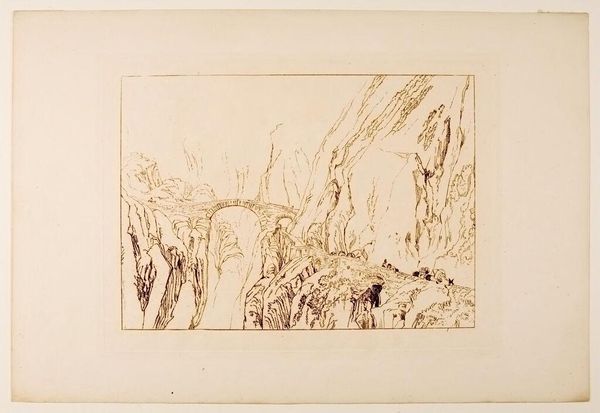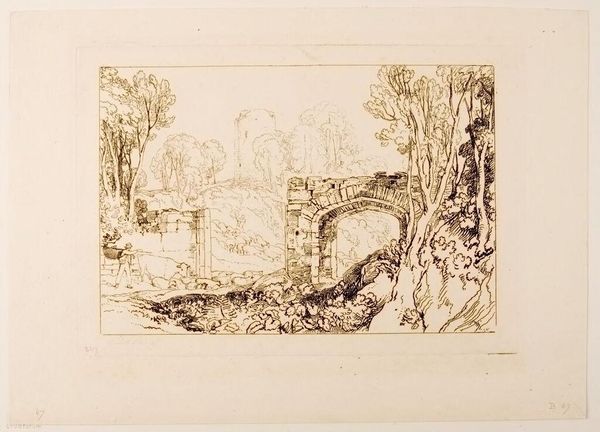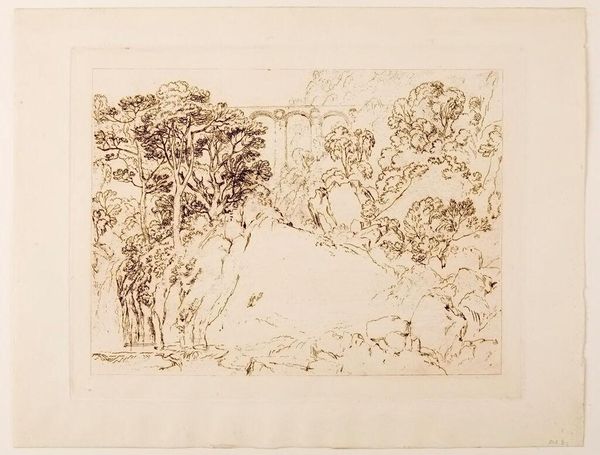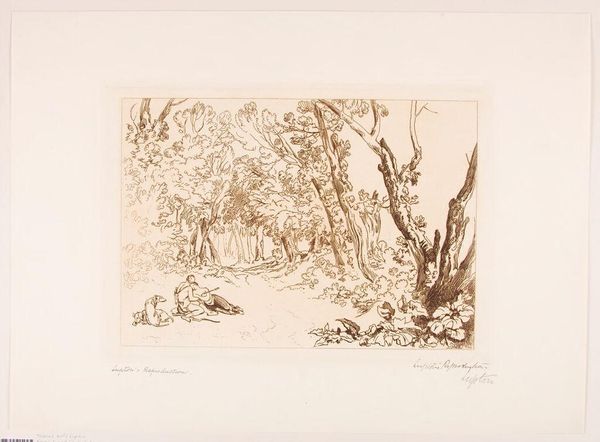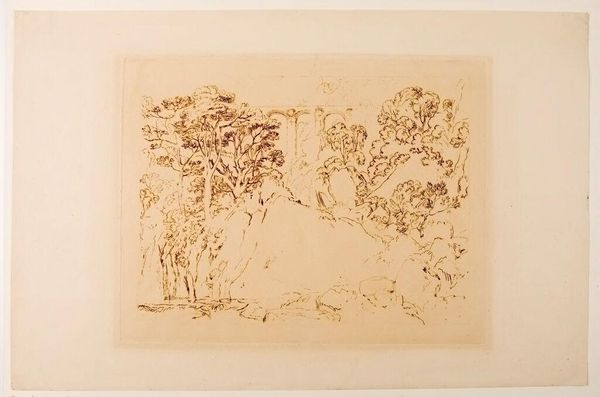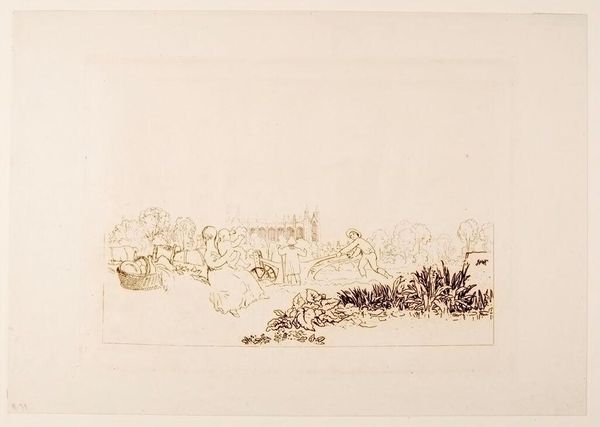
Temple of Jupiter in the Island of Aegina c. 19th century
0:00
0:00
Copyright: CC0 1.0
Curator: This is Joseph Mallord William Turner's "Temple of Jupiter in the Island of Aegina," currently held at the Harvard Art Museums. Editor: It evokes a tranquil scene, doesn't it? The sepia tones lend a dreamlike quality, like gazing at a faded memory. Curator: Precisely. The choice of medium, likely a wash drawing, speaks to the period's fascination with classical ruins and their availability as subject matter. Editor: The temple itself, rendered rather faintly in the background, seems to symbolize a distant, perhaps unattainable ideal, its symbolic weight lessened by the surrounding nature. Curator: Note how Turner uses repetitive, almost decorative, strokes to suggest the foliage, democratizing the landscape elements and making them the main subject. Editor: It's a delicate dance between the symbolic weight of the temple and the tangible reality of the natural world, skillfully captured with the use of sepia. Curator: Absolutely. I find the focus on readily available natural materials quite compelling in this piece. Editor: A compelling and poignant rendering, indeed, inviting reflection on memory and enduring symbols.
Comments
No comments
Be the first to comment and join the conversation on the ultimate creative platform.
